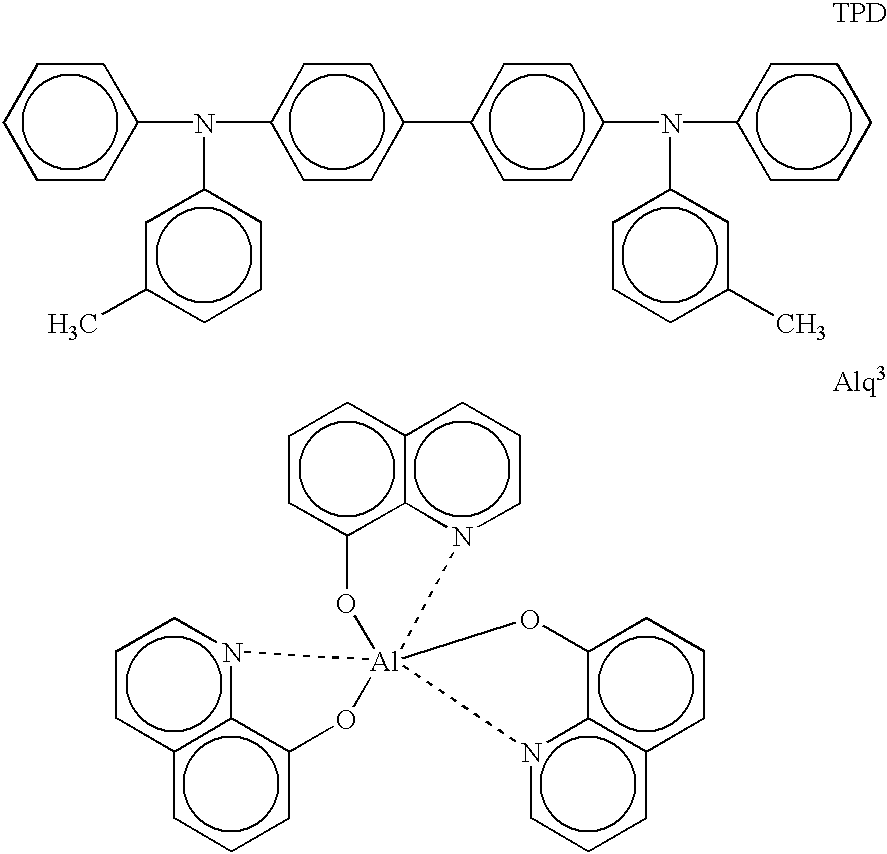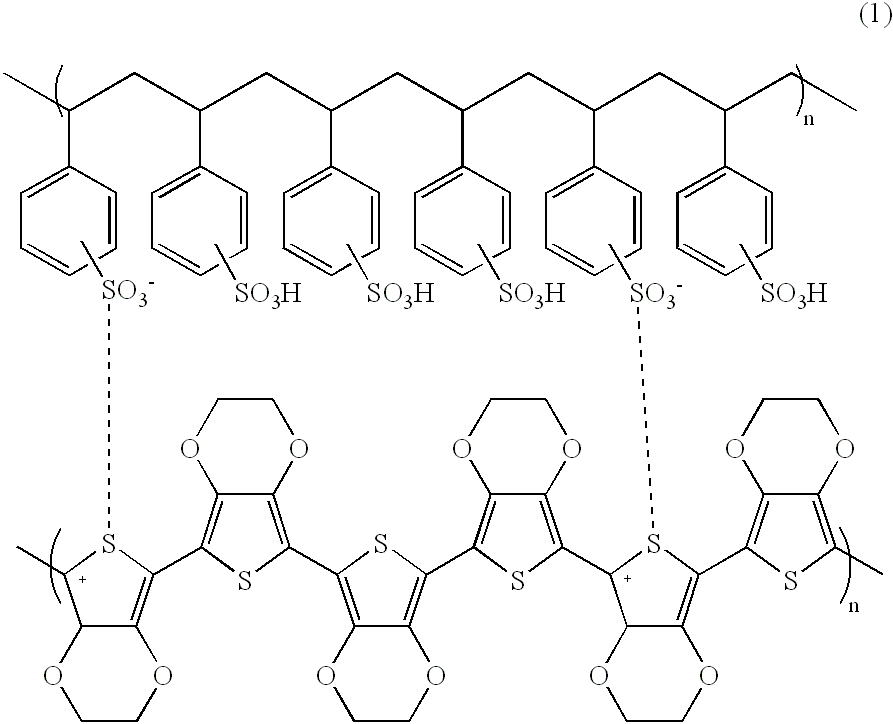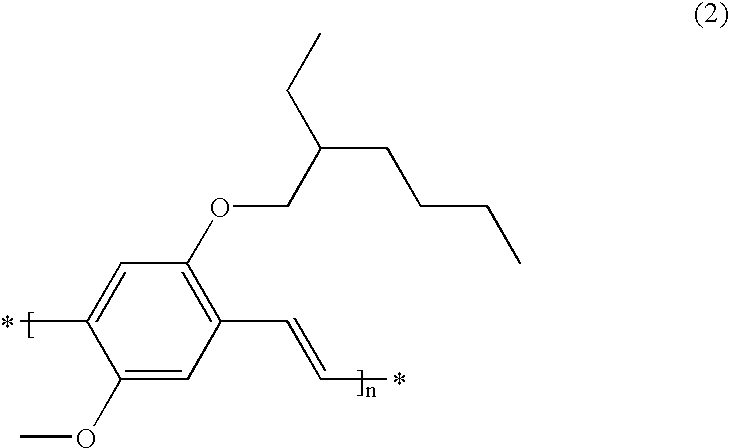Method for producing electroluminescent element
a technology of electroluminescent elements and methods, applied in the field of methods for producing el elements, can solve the problem that the methods cannot provide all the possibilities of el elements
- Summary
- Abstract
- Description
- Claims
- Application Information
AI Technical Summary
Benefits of technology
Problems solved by technology
Method used
Image
Examples
example 1
When a Luminous Layer is Made in a Single Layer
[0190] (Patterning of a Buffer Layer)
[0191] A patterned ITO substrate of 3 inches square and 1.1 mm in thickness was washed and used in this example as a substrate and the first electrode layer.
[0192] The spin coating of the substrate was carried out by dropping 0.5 ml of a coating liquid for a buffer layer shown in the following chemical formula (1) (poly-3,4-ethylenedioxythiophene / polystyrenesulphonate (PEDT / PSS): made by Bayer AG (Baytron P)) in the center part of the substrate. 2
[0193] A buffer layer was formed by holding the spin coated substrate at 2500 rpm for 20 seconds, and then the buffer layer was dried at 150.degree. C. for 5minutes. As a result, the film thickness became 800 .ANG..
[0194] The spin coating of the substrate was carried out by dropping 2 ml of positive photoresist liquid (OFPR-800 made by Tokyo Ohka Kogyo Co., Ltd.) in the center part of the substrate. A resist layer was formed by holding the spin coated substr...
example 2
When a Luminous Layer is Made in Three Layers
[0203] A buffer layer was patterned similarly to Example 1.
[0204] The spin coating of the substrate where a buffer layer had been patterned was carried out as the first luminous layer by dropping 2 ml of a 1 wt % xylene solution of luminescent polymer MEH-PPV, which is a polyparaphenylene vinylene derivative, in the center part of the substrate. A luminous layer was formed by holding the spin coated substrate at 2000 rpm for 10 seconds. As a result, the film thickness became 800 .ANG..
[0205] The spin coating of the substrate was carried out by dropping 2 ml of positive photoresist liquid (OFPR-800 made by Tokyo Ohka Kogyo Co., Ltd.) in the center part of the substrate. A resist layer was formed by holding the spin coated substrate at 500 rpm for 10 seconds and then holding at 2000 rpm for 20 seconds. As a result, the film thickness became about 1 .mu.m. The resist layer was prebaked at 80.degree. C. for 30 minutes. After that, the layer w...
example 3
The Change of the Solvent
[0214] An EL element was manufactured in the same way as Example 1 except that polyvinylcarbazole shown by the following chemical formula (3) was used as a luminous layer and toluene as a solvent for the luminous layer. 4
[0215] Though the resolution of the obtained pattern depends on the resolving power of the positive resist, the resolution of 10 .mu.m, which is impossible by the conventional methods of the vapor deposition mask method and the inkjet method, and the highly fine lines could be formed in this example.
[0216] (The Evaluation of the Luminous Properties of the EL Element.)
[0217] ITO electrode (the first electrode) side and Ag electrode (the second electrode) side were connected to an anode and a cathode, respectively, and were applied with direct current from a source meter. When 15 V was applied, luminescence was observed, and it was evaluated that there was no deterioration in the voltage of starting luminescence due to patterning with the use ...
PUM
| Property | Measurement | Unit |
|---|---|---|
| thickness | aaaaa | aaaaa |
| distance | aaaaa | aaaaa |
| thickness | aaaaa | aaaaa |
Abstract
Description
Claims
Application Information
 Login to View More
Login to View More - R&D
- Intellectual Property
- Life Sciences
- Materials
- Tech Scout
- Unparalleled Data Quality
- Higher Quality Content
- 60% Fewer Hallucinations
Browse by: Latest US Patents, China's latest patents, Technical Efficacy Thesaurus, Application Domain, Technology Topic, Popular Technical Reports.
© 2025 PatSnap. All rights reserved.Legal|Privacy policy|Modern Slavery Act Transparency Statement|Sitemap|About US| Contact US: help@patsnap.com



